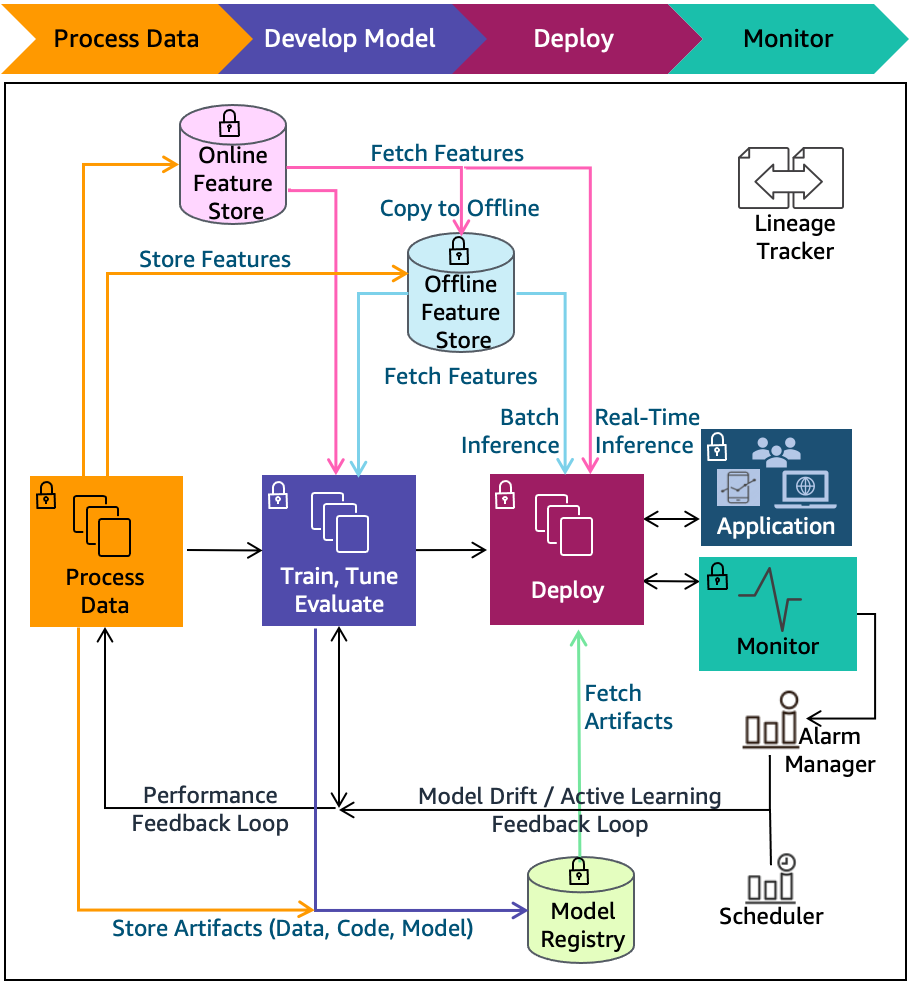Post Syndicated from Haleh Najafzadeh original https://aws.amazon.com/blogs/architecture/announcing-updates-to-the-aws-well-architected-framework-guidance/
We are excited to announce the availability of improved AWS Well-Architected Framework guidance. In this update, we have made changes across all six pillars of the framework: Operational Excellence, Security, Reliability, Performance Efficiency, Cost Optimization, and Sustainability.
In this release, we have made the implementation guidance for the new and updated best practices more prescriptive, including enhanced recommendations and steps on reusable architecture patterns targeting specific business outcomes in the Amazon Web Services (AWS) Cloud.
A brief history
The Well-Architected Framework is a collection of best practices that allow customers to evaluate and improve the design, implementation, and operations of their workloads in the cloud.
In 2012, the first version of the framework was published, leading to the 2015 release of the guidance whitepaper. We added the Operational Excellence pillar in 2016. The pillar-specific whitepapers and AWS Well-Architected Lenses were released in 2017, and the following year, the AWS Well-Architected Tool was launched.
In 2020, Well-Architected Framework guidance had a new release, along with more lenses, as well as API integration with the AWS Well-Architected Tool. The sixth pillar, Sustainability, was added in 2021. In 2022, dedicated pages were introduced for each consolidated best practice across all six pillars, with several best practices updated with improved prescriptive guidance. By April 2023, more than 50% of the Framework’s best practices have had their prescriptive guidance improved.
What’s new
As customers mature in their journey, they are seeking guidance to achieve accurate solutions that is prescriptive to their business, environments, and workloads. AWS Well-Architected is committed to providing such information to customers by continually evolving and updating our guidance.
The content updates and improvements in this release focus on having more complete coverage across the AWS service portfolio, helping customers make more informed decisions when developing implementation plans. Services that were added or expanded in coverage include: AWS Elastic Disaster Recovery, AWS Trusted Advisor, AWS Resilience Hub, AWS Config, AWS Security Hub, Amazon GuardDuty, AWS Organizations, AWS Control Tower, AWS Compute Optimizer, AWS Budgets, Amazon CodeWhisperer, Amazon CodeGuru, Amazon EventBridge, Amazon CloudWatch, Amazon Simple Notification Service, AWS Systems Manager, Amazon ElastiCache, and AWS Global Accelerator.
Pillar updates
Operational Excellence
The Operational Excellence Pillar has received updates to two of the five Design Principles and has a new Design Principle on observability, which highlights its importance and relevance throughout the pillar content. All 10 best practices in OPS05 have been updated, and we have consolidated 28 best practices into 16, across four questions (OPS04, OPS06, OPS08, and OPS09), as well as improving prescriptive guidance.
Security
In the Security Pillar, the Incident response in SEC10 underwent an update to align with the AWS Security Incident Response Guide, while introducing one new best practice, and improving the prescriptive guidance for others. Two best practices in SEC08 and SEC09 have received improved prescriptive guidance on securing workloads at rest and in transit.
Reliability
The Reliability Pillar has received prescriptive guidance improvements to one best practice in REL06, and six best practices in REL11, focused on how to best monitor, failover, remediate, and limit impacts of failures. The update addresses a wide variety of managed services and designs, including multi-Region-based resilience.
Performance Efficiency
The Performance Efficiency Pillar has been completely restructured, consolidating and merging guidance to reduce the number of best practices by 10 and the number of questions by three. We have added best practices around efficient caching and optimizing hardware acceleration. We have also improved the implementation guidance in all 32 best practices of the newly restructured Pillar.
Cost Optimization
The Cost Optimization Pillar has 10 best practices with improved implementation prescriptive guidance.
Sustainability
The Sustainability Pillar has received updates to the risk levels of seven best practices.
Conclusion
This Well-Architected release includes updates and improvements to 90 best practices: Operational Excellence (26), Security (8), Reliability (7), Performance Efficiency (32), Cost Optimization (10), and Sustainability (7). These changes are in addition to the 151 improved best practices released in 2023 (127 in April 10, 2023; and 24 in July 13, 2023), resulting in more than 73% of the existing Framework best practices updated at least once in the last year.
As of this release, 100% of Performance Efficiency, Cost Optimization, and Sustainability; 63% of Operational Excellence; 60% of Security; and 50% of Reliability Pillar content have been refreshed at least once since October 2022.
The content is available in 11 languages: English, Spanish, French, German, Italian, Japanese, Korean, Indonesian, Brazilian Portuguese, Simplified Chinese, and Traditional Chinese.
Updates in this release are also available in the AWS Well-Architected Tool, which can be used to review your workloads, address important design considerations, and help ensure that you follow the best practices and guidance of the AWS Well-Architected Framework.
Ready to get started? Review the updated AWS Well-Architected Framework Pillar best practices, as well as pillar-specific whitepapers.
Have questions about some of the new best practices or most recent updates? Join our growing community on AWS re:Post.




